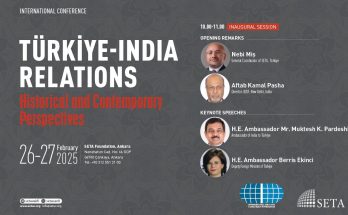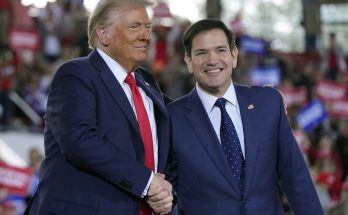 WASHINGTON: It was a blessed sunny day in Washington, the kind of weather that fills you with hopes of rebirth and renewal. Inside the White House, India’s Prime Minister Manmohan Singh and US President Barack Obama greeted each other respectfully, smiled, and held full-spectrum talks to put the mojo back in a crucial strategic relationship, which some thought had languished after the climatic high of the transformational nuclear deal eight summers ago.
WASHINGTON: It was a blessed sunny day in Washington, the kind of weather that fills you with hopes of rebirth and renewal. Inside the White House, India’s Prime Minister Manmohan Singh and US President Barack Obama greeted each other respectfully, smiled, and held full-spectrum talks to put the mojo back in a crucial strategic relationship, which some thought had languished after the climatic high of the transformational nuclear deal eight summers ago.
The atmosphere was warm and friendly, a little staid but sincere and purposeful, as Manmohan Singh lavished praise on President Obama for his contribution in widening the compass of the India-US relationship. “Overall, I have come here to thank President Obama for all that he has done to strengthen, widen and deepen the cooperation between our two countries,” Manmohan Singh said.
In sync with “the new normal” in their bilateral relations that seems to be settling into the familiar comforts of a relationship in which the partners can afford to cavil but know they need each other, there was no headline-grabbing announcement. But the God, and the devil, lie in details.
S o here are some all-too-real outcomes that flowed from the third summit talks between the leaders of the world’s largest democracies. First and foremost, the two countries managed to breathe some life into their landmark nuclear deal by a preliminary commercial agreement between the Nuclear Power Corporation of India Limited and Westinghouse Electric Company. The big deal that saw the transformation of the hitherto estranged democracies into engaged democracies was increasingly looking like a chimera due to the divisive debate over India’s civil nuclear liability law, but is now back into the reckoning after the small but important step to sign a commercial contract between the NPCIL and Westinghouse. “They welcomed the announcement that NPCIL and U.S. nuclear company Westinghouse have concluded a Preliminary Contract to develop a nuclear power plant in Gujarat in India,” said a joint statement after the talks. “Building on this, the Leaders urged NPCIL and U.S. companies Westinghouse and General Electric-Hitachi to expedite the necessary work to establish nuclear power plants in Gujarat and Andhra Pradesh. Both sides reaffirm their commitment to the full and timely implementation of the India-US Civil Nuclear Cooperation Agreement.”
o here are some all-too-real outcomes that flowed from the third summit talks between the leaders of the world’s largest democracies. First and foremost, the two countries managed to breathe some life into their landmark nuclear deal by a preliminary commercial agreement between the Nuclear Power Corporation of India Limited and Westinghouse Electric Company. The big deal that saw the transformation of the hitherto estranged democracies into engaged democracies was increasingly looking like a chimera due to the divisive debate over India’s civil nuclear liability law, but is now back into the reckoning after the small but important step to sign a commercial contract between the NPCIL and Westinghouse. “They welcomed the announcement that NPCIL and U.S. nuclear company Westinghouse have concluded a Preliminary Contract to develop a nuclear power plant in Gujarat in India,” said a joint statement after the talks. “Building on this, the Leaders urged NPCIL and U.S. companies Westinghouse and General Electric-Hitachi to expedite the necessary work to establish nuclear power plants in Gujarat and Andhra Pradesh. Both sides reaffirm their commitment to the full and timely implementation of the India-US Civil Nuclear Cooperation Agreement.”
Secondly, the September 27 talks saw a striking congruence between India and the US over a gamut of regional and global issues ranging from Afghanistan to Iran and Syria, belying the narrative of disconnect.
“The president briefed me about his initiatives both with regard to Syria and with regard to Iran; and I complimented him for his vision, for his courage in giving diplomacy yet another chance. India fully supports these initiatives,” he said after the talks. He was alluding to Obama’s proactive leadership and initiative in starting the process of re-engagement with Iran and the deal among the permanent five members of the UN Security Council to go ahead with the Russian proposal for dismantling of Syrian chemical weapons and pursue the path of peace and reconciliation in the West Asian nation.
Thirdly, the two countries issued a separate declaration on bolstering their defence partnership from buyer-seller relationship to co-production, joint research and co-development, a qualitative transformation which is set to be one of the key drivers of their strategic partnership in the future.
Fourthly, the two leaders rightly identified economic relationship as the heart of their partnership in the future.
Apart from these important outcomes, the joint communique unveiled the launch of a new dialogue between India and the US on the Indian Ocean, a region that is becoming the new geopolitical chessboard and has acquired a greater salience in view of competitive ambitions and the US’ Asia rebalancing policy.
These outcomes may not satisfy diehard sceptics who love to crib regardless of the facts of the situation and romantics whose dreams often clash with the hard rocks of reality. But in all fairness, the Manmohan-Singh-Obama talks in Washington September 27 will be seen as a sincere effort by the leaders of the two countries to rearticulate the critical significance of this relationship not just for them but for the world at large. The joint statement revived optimism about fructifying the full potential of the relationship. “President Obama and Prime Minister Singh pledged to make the next decade equally as transformative, challenging their governments to reach the full potential of this partnership, particularly in the areas of security cooperation, bilateral trade and investment, energy and environment, higher education, and global architecture.”
“Today’s meeting demonstrates that the interests of the United States and India continue to converge, and this partnership will indeed be a defining one for the 21st Century,” said the joint statement.
Author Profile

- Manish Chand is Founder-CEO and Editor-in-Chief of India Writes Network (www.indiawrites.org) and India and World, a pioneering magazine focused on international affairs. He is CEO/Director of TGII Media Private Limited, an India-based media, publishing, research and consultancy company.
Latest entries
 India and the WorldFebruary 14, 2025Modi-Trump COMPACT: India, US launch MEGA partnership for 21st century
India and the WorldFebruary 14, 2025Modi-Trump COMPACT: India, US launch MEGA partnership for 21st century India and the WorldJanuary 28, 2025Modi, Trump talk global peace, focus on strategic connect
India and the WorldJanuary 28, 2025Modi, Trump talk global peace, focus on strategic connect India and the WorldDecember 16, 2024Kazan Spirit: India, China SRs to hold talks in Beijing
India and the WorldDecember 16, 2024Kazan Spirit: India, China SRs to hold talks in Beijing India and the WorldDecember 10, 2024Malta backs stronger ties, sees India as a rising global power: Envoy
India and the WorldDecember 10, 2024Malta backs stronger ties, sees India as a rising global power: Envoy







